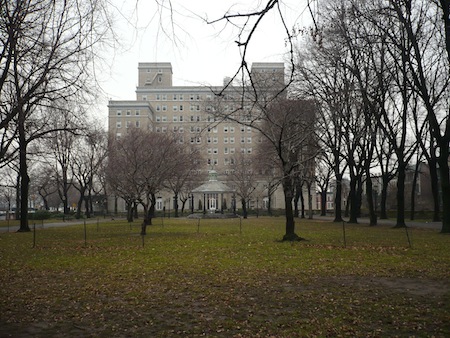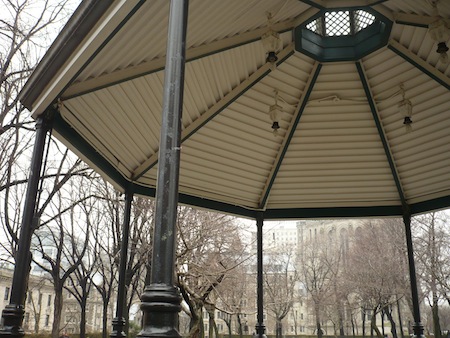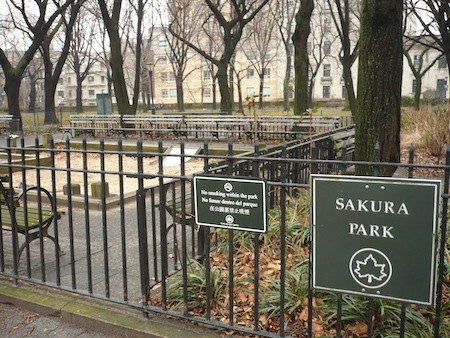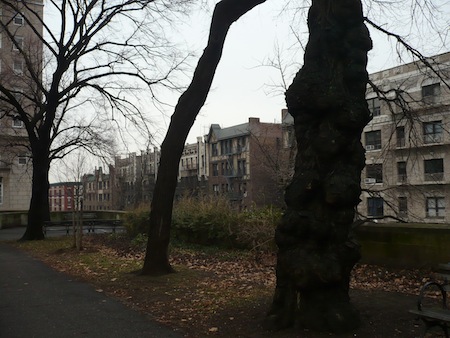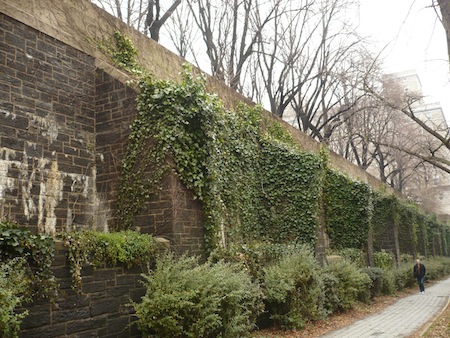Ever since Riverbank State Park opened 20 years ago on the Hudson River, uniquely situated atop a sewage treatment plant, I've meant to pay a visit. But knowing that the park was most known for its athletic facilities, I didn't expect there'd be much of interest to report for this greenery-focused blog. Sure enough, Nature isn't the big reason to visit Riverbank. And yet, arriving on a misty and exceptionally mild January day, I had a fantastic time just walking around the grounds.

Yes, it's mostly an athletic complex. But with the 28 acres mostly deserted for the winter, the generous spread of sports facilities reminded me much more of ancient Olympia in Greece than of the grubby, uninviting blacktops of my un-athletic childhood. Beyond lofty, green, arched gates, the sweeping entry road crosses the roaring highway far below, on this foggy day providing a strangely sublime view of the New Jersey buildings reflected in the grey river.

After a long crossing you reach the park itself and if you stay to the right you'll find open spaces and picnic areas with nice riverside views. Here's the view north towards the George Washington Bridge:
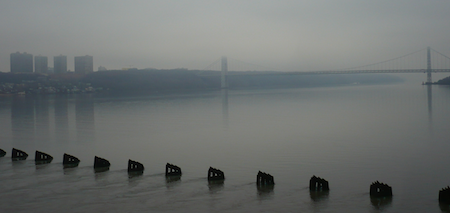
And here's the Charles B. McAllister nosing its way into some sort of business:

Up in the park, the previous night's rain had left puddles in the brick walkways reflecting the bare trees of January:

While it's no Greek ruin, the Waterfront Amphitheatre furthered my sense of walking through a modern iteration of an ancient plan. The shapes at the top are more of those New Jersey building reflections in the Hudson River:

Outdoor swimming facilities speak more starkly when they're closed. This one echoes the shape of the amphitheatre too.

A few people were using the track or kicking around a soccer ball.

And I discovered that softball season can extend into the middle of the winter if the weather cooperates.

This garden was awaiting warmer days:

But these geese have their own calendar.

The busy facility here this time of year is the ice skating rink, which also has the park's most distinctive architectural feature in these arches:

In the park's early days, people reported nasty smells pervading the grounds, but evidently those problems have been fixed. Mostly it's easy to forget you're on top of a sewage treatment plant. An elevated section at the southern end felt like its own world, where kids were playing basketball, and the waterfront stretches on this lonely winter day felt truly peaceful. But back near the entrance, giant organ pipes loom high above everything else, attended by buses-in-waiting.

Wherever you walk in Manhattan, the hidden life of the city pulses beneath you, popping up here and there and now and then – when transformers explode in a cascade of lights during a superstorm, or where giant stacks watch over ballfields, gardens, grazing geese, chattering children, a cultural center, even a restaurant, as they do here at Riverbank State Park.
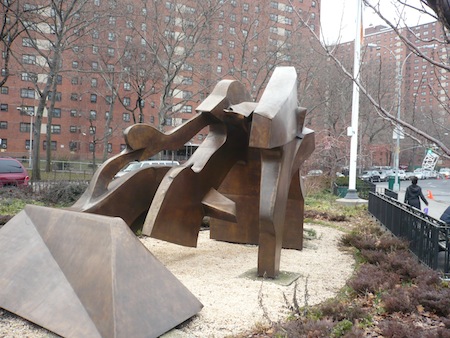
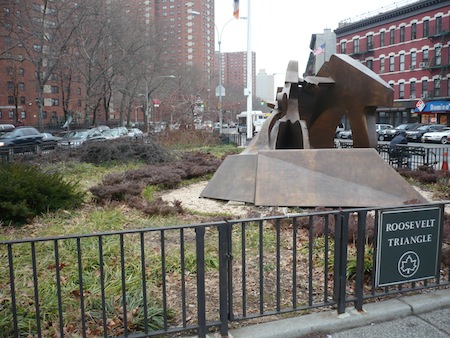
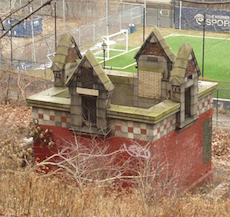 I chronicled the southern section in an
I chronicled the southern section in an 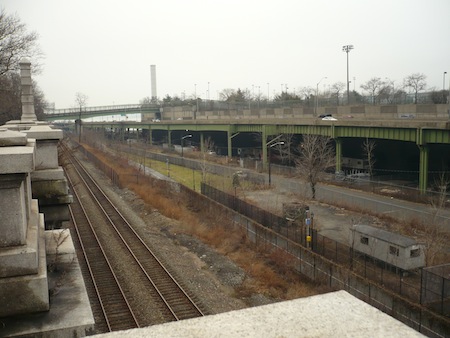

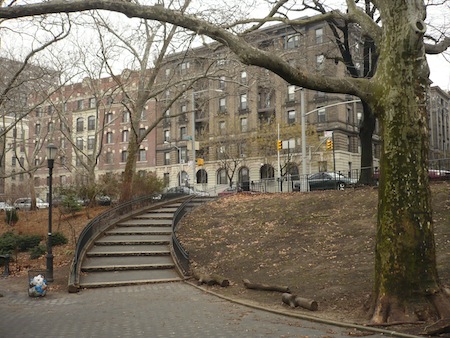
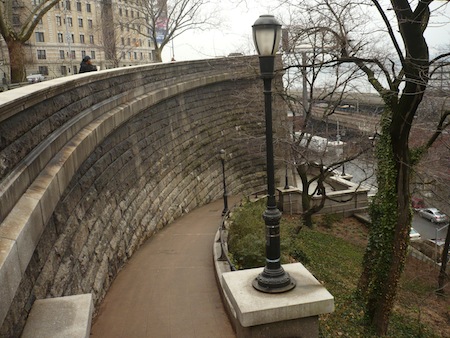
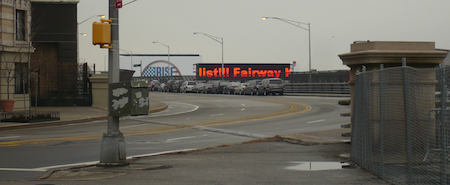
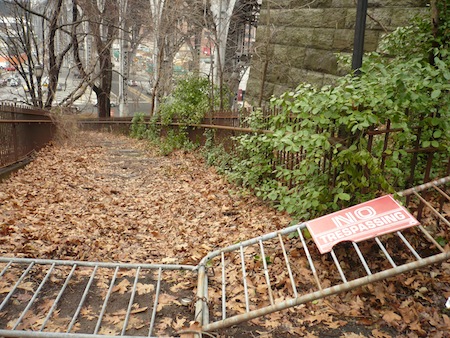
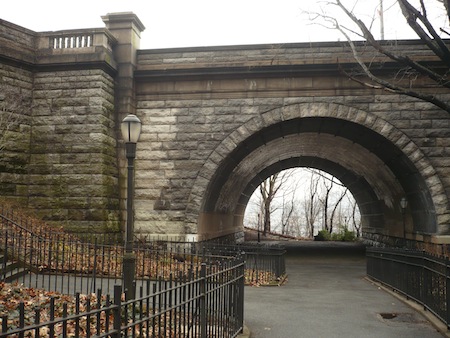
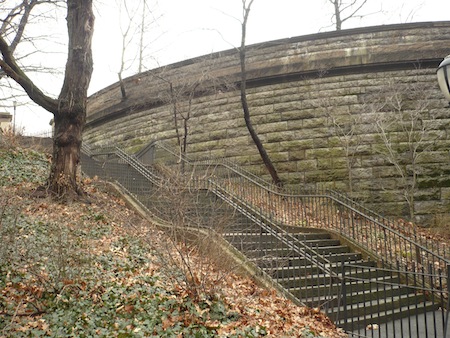
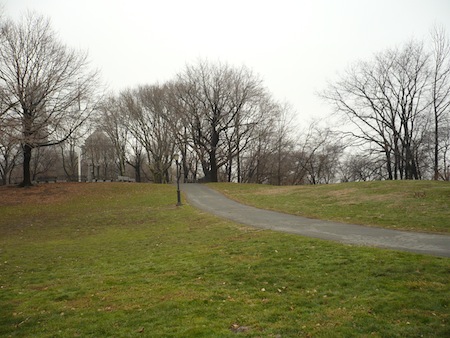
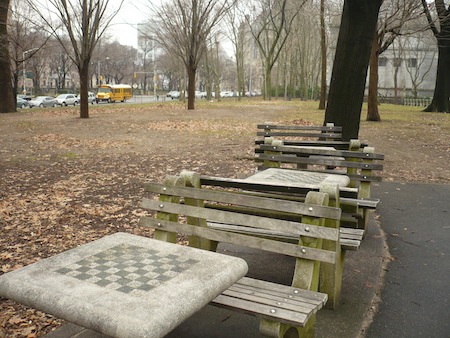
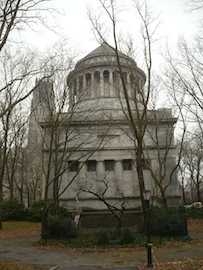 The mausoleum's exterior is modeled after Mausoleus's tomb (that's where they get the word, in fact) in the ancient Greek city of Halicarnassus in Turkey. The memorial inside focusses on Grant's Civil War career rather than his later, less successful Presidency. A ranger/guide will answer your questions, or you can just wander the dark space, which contains very little actually: a map showing the sites of Grant's Civil War actions, banners of various companies that served under him, and on the lower level, circling the sarcophagi themselves, busts of other generals. Surrounding the grounds are whimsical benches designed by Pedro P Silva, an artist inspired by Antoni Gaudí.
The mausoleum's exterior is modeled after Mausoleus's tomb (that's where they get the word, in fact) in the ancient Greek city of Halicarnassus in Turkey. The memorial inside focusses on Grant's Civil War career rather than his later, less successful Presidency. A ranger/guide will answer your questions, or you can just wander the dark space, which contains very little actually: a map showing the sites of Grant's Civil War actions, banners of various companies that served under him, and on the lower level, circling the sarcophagi themselves, busts of other generals. Surrounding the grounds are whimsical benches designed by Pedro P Silva, an artist inspired by Antoni Gaudí.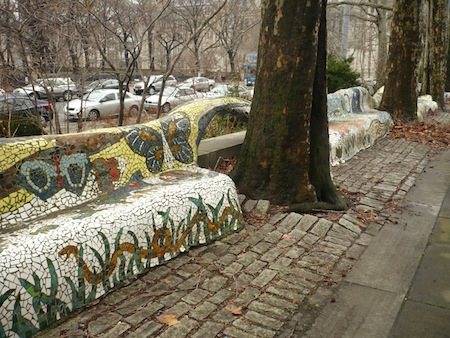
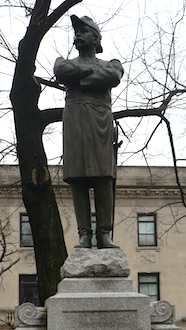 named after the cherry blossoms ("sakura" in Japanese) the bloom on a batch of trees Japan donated to the city a century ago. (No, you won't see any cherry blossoms in my photos. It's January.)
named after the cherry blossoms ("sakura" in Japanese) the bloom on a batch of trees Japan donated to the city a century ago. (No, you won't see any cherry blossoms in my photos. It's January.)